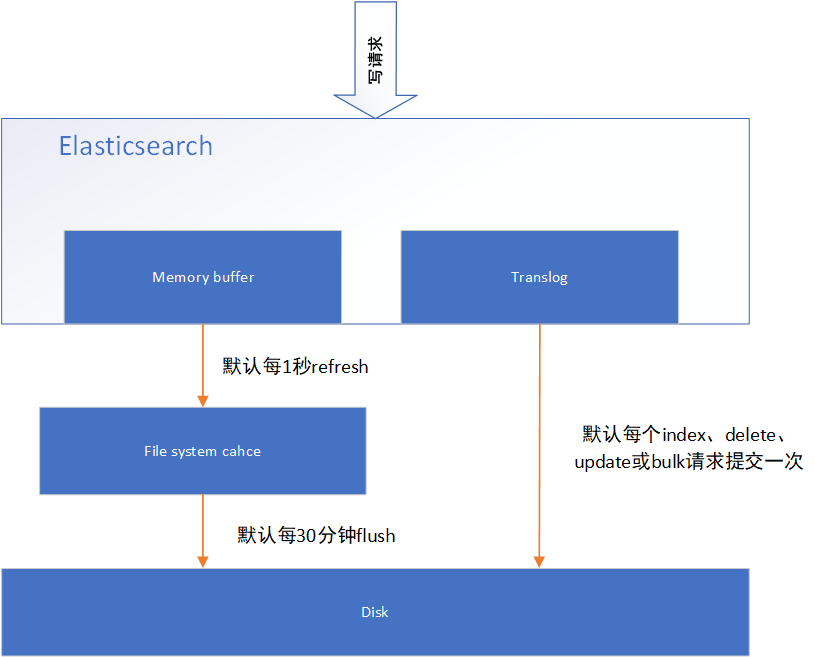

elasticsearch准实时原理
source link: https://wakzz.cn/2019/04/21/elasticsearch/elasticsearch%E5%87%86%E5%AE%9E%E6%97%B6%E5%8E%9F%E7%90%86/
Go to the source link to view the article. You can view the picture content, updated content and better typesetting reading experience. If the link is broken, please click the button below to view the snapshot at that time.

elasticsearch准实时原理
elasticsearch被称为准实时搜索,原因是对es的写入操作成功后,写入的数据需要1秒钟后才能被搜索到,因此es搜索是准实时或者又称为近实时(near real time)。
elasticsearch底层使用的Lucene,而Lucene的写入是实时的。但Lucene的实时写入意味着每一次写入请求都直接将数据写入硬盘,因此频繁的I/O操作会导致很大的性能问题。

当一个写请求发送到es后,es将数据写入memory buffer中,并添加事务日志(translog)。如果每次一条数据写入内存后立即写到硬盘文件上,由于写入的数据肯定是离散的,因此写入硬盘的操作也就是随机写入了。硬盘随机写入的效率相当低,会严重降低es的性能。
因此es在设计时在memory buffer和硬盘间加入了Linux的页面高速缓存(File system cache)来提高es的写效率。
当写请求发送到es后,es将数据暂时写入memory buffer中,此时写入的数据还不能被查询到。默认设置下,es每1秒钟将memory buffer中的数据refresh到Linux的File system cache,并清空memory buffer,此时写入的数据就可以被查询到了。
但File system cache依然是内存数据,一旦断电,则File system cache中的数据全部丢失。默认设置下,es每30分钟调用fsync将File system cache中的数据flush到硬盘。因此需要通过translog来保证即使因为断电File system cache数据丢失,es重启后也能通过日志回放找回丢失的数据。
translog默认设置下,每一个index、delete、update或bulk请求都会直接fsync写入硬盘。为了保证translog不丢失数据,在每一次请求之后执行fsync确实会带来一些性能问题。对于一些允许丢失几秒钟数据的场景下,可以通过设置index.translog.durability和index.translog.sync_interval参数让translog每隔一段时间才调用fsync将事务日志数据写入硬盘。
对于需要写入后实时查询的数据,可以通过手动refresh操作将memory buffer的数据立即写入到File system cache。
- 文档更新后立即
refreshPUT /test/_doc/1?refresh
{"test": "test"}
PUT /test/_doc/2?refresh=true
{"test": "test"}
https://www.elastic.co/guide/en/elasticsearch/reference/current/docs-refresh.html
refresh整个索引的memory bufferPOST /test/_refresh
https://www.elastic.co/guide/en/elasticsearch/reference/current/indices-refresh.html
Recommend
About Joyk
Aggregate valuable and interesting links.
Joyk means Joy of geeK